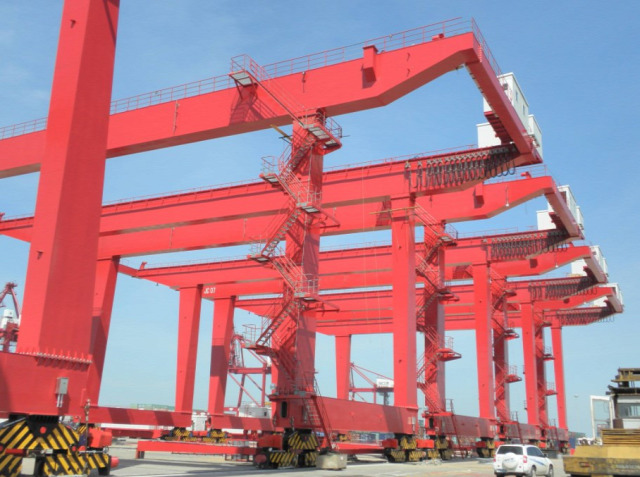Container gantry cranes are vital equipment used in ports and container terminals for efficient and rapid container handling. As these cranes perform heavy lifting operations in complex and dynamic environments, ensuring the safety of personnel and cargo is of paramount importance. In this article, we will explore the essential safety features and measures incorporated into container gantry cranes. By understanding these features and implementing proper safety protocols, operators can mitigate risks, prevent accidents, and promote a secure working environment for crane operators and other personnel involved in container handling operations.

Overload Protection Systems
Overload protection systems are crucial safety features in container gantry cranes. These systems are designed to monitor and prevent the crane from lifting loads beyond its rated capacity. Overload protection mechanisms may include load sensors, load moment indicators, or load limiters that provide real-time information about the load being lifted. When the load approaches or exceeds the crane's capacity, the system triggers alarms, warning the operator to take corrective action. Some advanced systems may even automatically stop the crane's lifting operation to prevent overloading. Implementing reliable overload protection systems ensures safe lifting operations and minimizes the risk of structural failure or accidents caused by excessive loads.
Anti-Collision Systems
Container gantry cranes operate in close proximity to other cranes, structures, and vessels, increasing the risk of collisions. Anti-collision systems are installed to prevent such incidents. These systems utilize sensors, cameras, or radar technology to detect potential collisions and provide real-time warnings to crane operators. Anti-collision systems can also automatically initiate corrective actions, such as slowing down or stopping crane movements when a potential collision is detected. By implementing robust anti-collision systems, the risk of accidents, damages to the container handling gantry crane, and potential injury to personnel can be significantly reduced.
Limit Switches and Travel End Stops
Limit switches and travel end stops are critical safety features that prevent the crane from exceeding its operational boundaries. Limit switches are positioned at predetermined points along the crane's travel path, and they automatically stop the crane's movement when reached. Travel end stops, installed at the ends of the crane's travel path, serve a similar purpose. These safety features ensure that the crane does not collide with terminal structures or move beyond safe limits, preventing accidents caused by overtravel or unintended movements.
Emergency Stop Buttons
Emergency stop buttons are easily accessible controls located in the operator's cabin and other strategic positions on the crane. In the event of an emergency or hazardous situation, pressing the emergency stop button immediately halts all crane operations. This feature allows operators to quickly stop the crane's movements in case of personnel endangerment, equipment malfunction, or any other critical situation. Emergency stop buttons should be clearly labeled, easily identifiable, and regularly tested to ensure they are functioning correctly. Proper training and awareness among crane operators and personnel on the location and use of emergency stop buttons are crucial for swift and effective response in emergency scenarios.
Operator Cab Safety Features
Container gantry crane operator cabins are equipped with various safety features to protect the crane operators. These features include tempered safety glass windows for optimal visibility and protection from external elements. Non-slip flooring and handrails are installed to prevent slipping or falling accidents during crane operations. Comfortable seating, ergonomic controls, and climate control systems ensure operator comfort and minimize distractions or fatigue-related errors. Additionally, operator cabins are often equipped with intercom systems or two-way communication devices to enable clear and instant communication between the operator and ground personnel.
Conclusion
Safety is a top priority in container gantry crane operations, and the incorporation of essential safety features plays a vital role in preventing accidents and ensuring a secure working environment. Overload protection systems, anti-collision systems, limit switches, emergency stop buttons, and operator cabin safety features are crucial elements in container gantry crane safety. By implementing and regularly maintaining these features, operators can minimize the risks associated with lifting heavy loads, prevent collisions, and protect the well-being of personnel involved in container handling operations.

